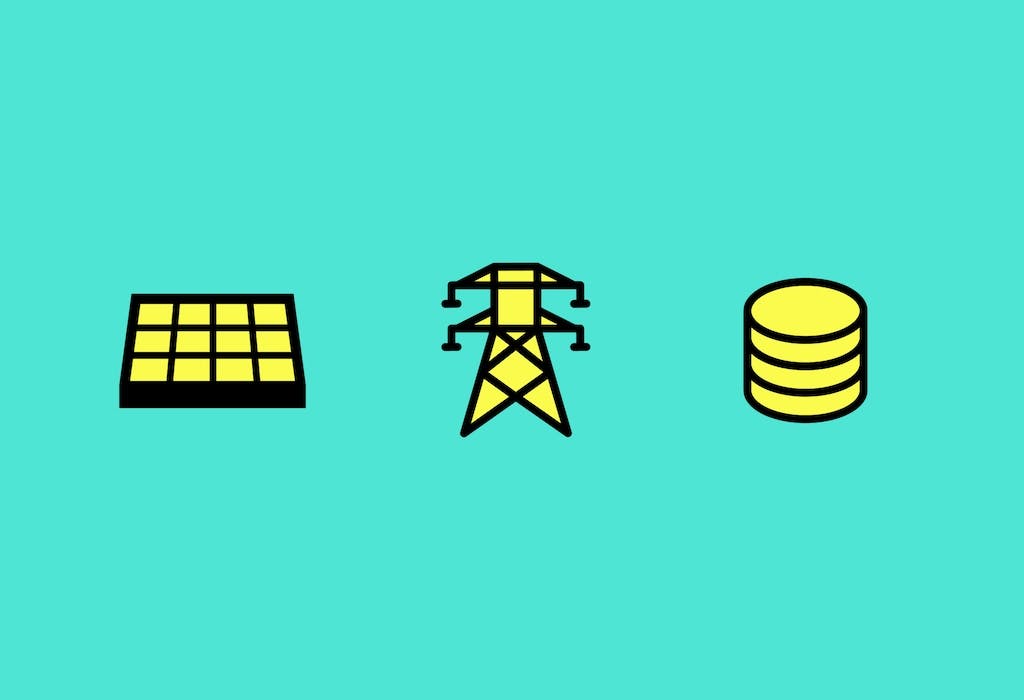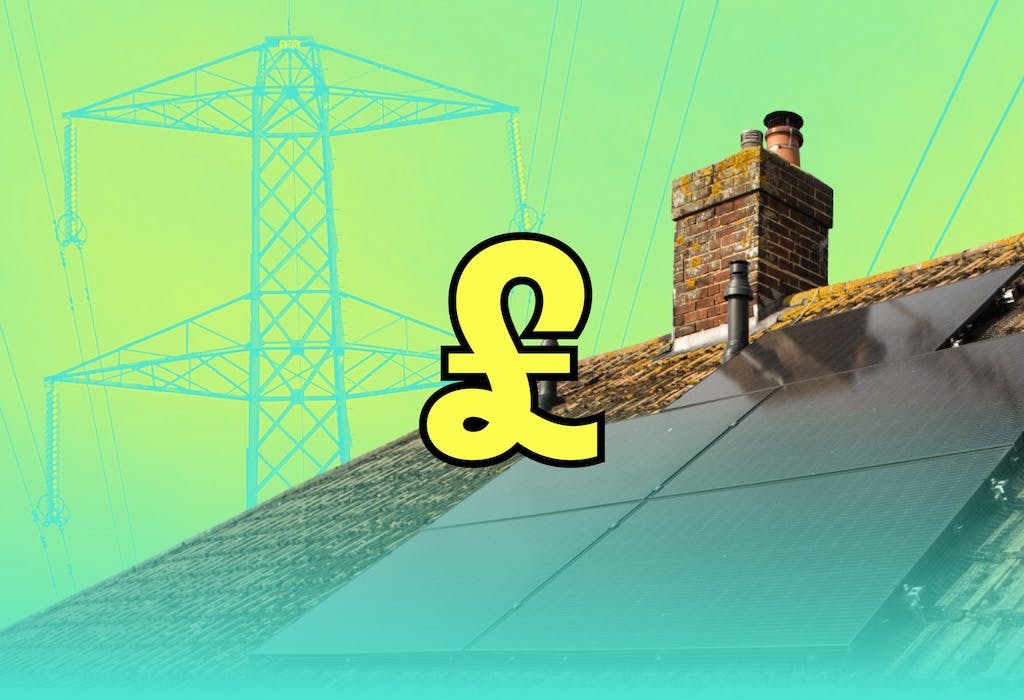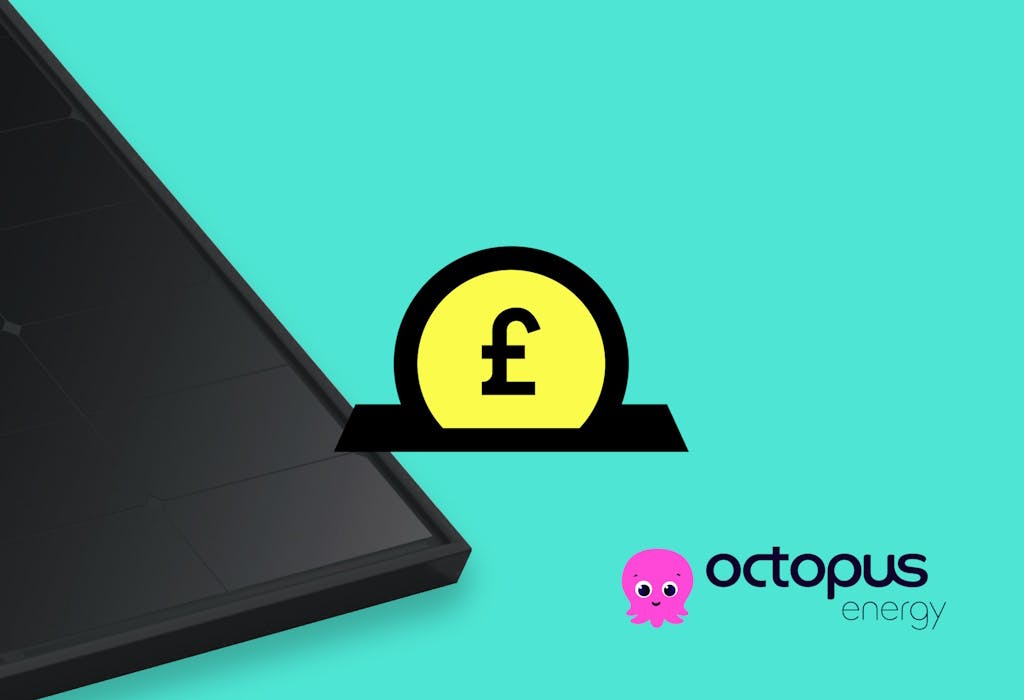- Solar advice hub
- Exporting-to-the-grid
- Do smart meters and solar panels work together?
Do smart meters and solar panels work together?
Here's how to use a smart meter with solar panels, why doing so can earn you hundreds of pounds per year, and what you need to do to get a smart meter for free.


Why you can trust our content
We know that the solar industry is full of misinformation, but we only use reliable sources, including:
- Our experienced solar experts, installers and system designers
- Our own database of solar & battery system designs
- Authoritative bodies like MCS and the UK government



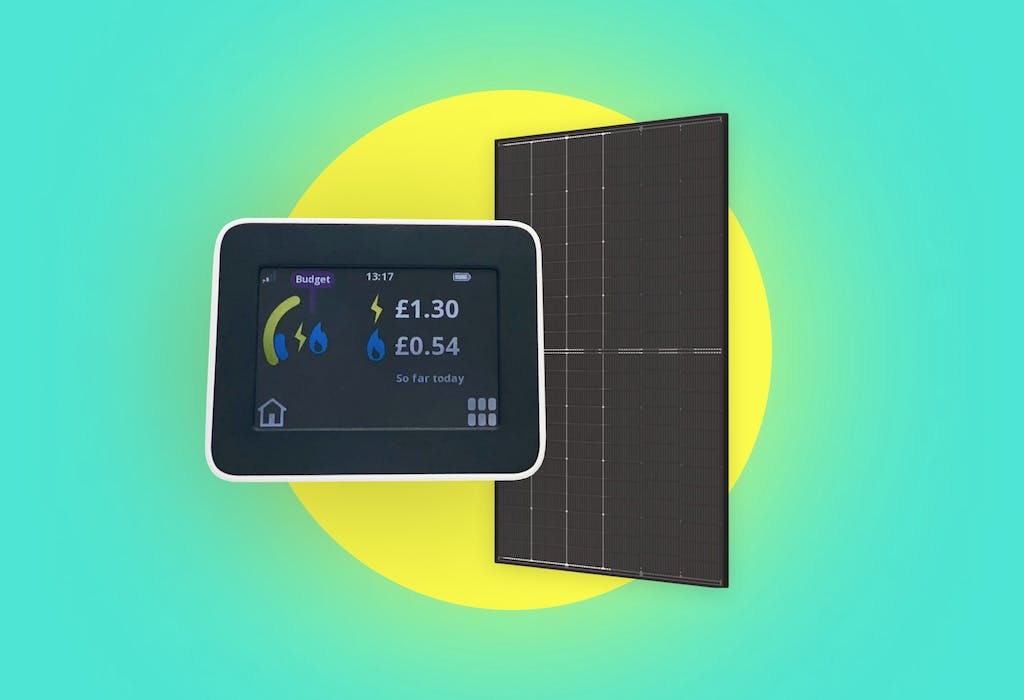
Calculate savings
What kind of home do you live in?
Calculate savings
What kind of home do you live in?
Smart meters & solar panels: at a glance
In the face of climate change and high energy bills, households need ways to cut back on their energy usage. Smart meters and solar panels both offer a solution.
Smart meters promote awareness of your energy usage and encourage reduced consumption, whilst solar panels can significantly cut the amount of electricity you buy from the grid.
Unfortunately, there’s a lot of confusion about whether these two pieces of technology actually work together.
Read on as we explore how solar panels and smart meters interact with each other, and dispel the myth that they ‘don’t mix’.
And if you’re wondering how much a solar & battery system could save you, enter a few details below and we’ll provide an estimate for you.
What is a smart meter?
A smart meter is a device that replaces your traditional meter and automatically tracks your gas and electricity usage, sending this data to your energy supplier without you needing to take manual readings.
The “smart” bit is the meter itself, which is a two-way communication device.
It sends your supplier accurate readings of how much energy you’ve consumed and exported every 30 minutes on a secure national network, and allows energy companies to quickly update your tariff (with your consent, of course).
This allows for more precise billing, based on your actual energy consumption – which also enables customers to easily join any time of use tariff and use electricity when it’s cheaper.
It also sets smart meters apart from traditional models, which were limited to telling the customer how much energy they’d used since the last time they took a reading.
Smart meters look similar to old meters, with the only outward difference being that they usually have a larger digital screen. All the crucial differences are internal.
Every smart meter comes with an In-Home Display (IHD), which is a small portable screen that shows you information about your energy usage without you having to find your meter.
The IHD lets you set a budget, tells you how much energy you’re using at any given moment, and tracks your energy consumption across weeks and months.
You can see which of your appliances consume the most electricity, adjust your usage accordingly, and potentially replace any energy-inefficient devices.
Your smart meter will track how much electricity you consume, and – if you’re among the 84% of British homes on the gas grid – they’ll track your gas usage too.
They’ve grown in popularity in recent years, and now make up 68% of all domestic meters in Britain.
This number is increasing, too, with 720,000 smart meters installed across the country in the first three months of 2025.
Is it true that smart meters and solar panels don’t mix?
Smart meters are an essential part of getting the most out of your solar installation.
There were previously issues with first-generation smart meters (SMETS1) losing their smart capabilities when a consumer switched suppliers (more on this below).
Thankfully, the issue has been almost completely resolved, both due to the release of second-generation SMETS2 smart meters in 2017 and an accompanying scheme to remotely migrate SMETS1 meters.
Unlike traditional meters, which only record how much energy you use and don’t tell anyone that information, a smart meter can monitor both the electricity you consume and the electricity you export back to the grid – and tell your supplier.
This is essential for receiving solar export payments.
All 415,000 solar homes that have joined a Smart Export Guarantee (SEG) tariff since the scheme launched in 2020 have needed a smart meter to sign up.
So we know that there are at least that many households with solar panels and a smart meter – but we should also include the solar homes on a Feed-in Tariff (FiT) export rate.
More than 800,000 solar households are on the FiT – and with 14.43% of the electricity exported on the FiT coming from generators with smart meters, it’s safe to say there are plenty more solar homes that have a smart meter.
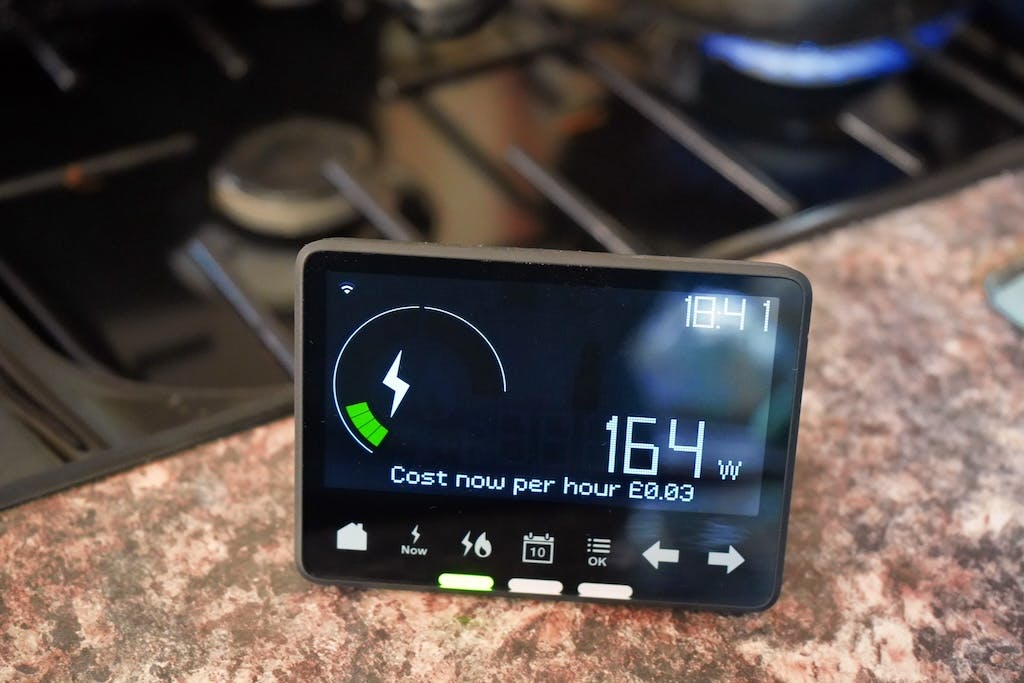
Why do solar panels need a smart meter?
Homes with solar panels need a smart meter to sign up for solar export tariffs, which have taken off since the launch of the Smart Export Guarantee (SEG) in 2020.
Energy suppliers require any household on an export tariff to have a smart meter, since these meters track precisely how much electricity a home sends to the grid.
This allows your export tariff supplier to easily credit you with the correct amount, unlike with previous export meters, which needed you to carry out manual readings.
Thankfully, you’re legally entitled to ask your supplier to install a smart meter at your home, for free.
A typical UK household can earn £343 per year from selling their excess solar electricity.
This figure is based on a home that uses 3,400kWh of electricity per year (which is the UK average) with solar irradiance of 850kWh per kWp, has a 4.6kWp solar panel system, and a 5.2kWh battery.
The home is signed up to Good Energy's Solar Savings tariff for export, Good Energy EV Charge for import, and exports 65% of its solar electricity.
To find out more, check out our guide to the best export tariff rates.
How to get an export reading from your smart meter
Some very advanced IHDs can tell you how much electricity you’re exporting, but most don’t, so you’ll probably have to go to your smart meter or solar panel app to get an export reading.
Finding your exports on an app will differ depending on the supplier, but it should be relatively straightforward – which isn’t necessarily the case with smart meters.
There are various ways to see your exports, depending on which buttons your smart meter has. For example, if you have a model made by Secure that has a keypad, you can just press ‘9’ for a reading.
However, if you have a Kaifa meter with two white buttons, there’s no need to press anything. The digital display will cycle through four screens, and you just need to wait for it to show a negative amount in kWh, such as ‘-100kWh’.
There are several different types of meter, but your energy supplier should be able to explain the process in detail, either online or over the phone.
Once you know how to check, it’s easy – and slightly addictive – though in general it’s easier to just use your solar app.

What are the types of smart meter?
There are two main types of smart meter: first generation (SMETS1) and second generation (SMETS2). SMETS stands for Smart Metering Equipment Technical Specifications.
SMETS1 meters aren’t being installed anymore, with households receiving more advanced SMETS2 versions instead.
First-generation smart meters
Energy suppliers installed first-generation smart meters from the start of the rollout in 2011 until 2017, when they mostly switched to second-generation meters.
First-generation models came with the same type of 3G sim card found in mobile phones, which transmitted your usage to your supplier just like phones do.
Unfortunately, some first-generation meters encountered a significant technical issue: if you changed your energy provider, they could lose their smart capabilities.
Meters with this fault would stop sending automatic readings, and require manual readings instead.
The Data Communications Company (DCC) is in the process of remotely moving SMETS1 meters onto its national communications network, which restores their smart capabilities.
The DCC is giving priority to SMETS1 meters that aren’t currently smart, and since this entire endeavour is performed remotely, households don’t need to do anything.
The majority of SMETS1 meters have now been upgraded, according to the government, which means they should stay smart even if you switch suppliers.
The DCC is working with energy companies to upgrade the remaining SMETS1 meters.
Compatibility issues with SMETS1 and solar panels
SMETS1 meters sometimes failed to properly record solar panel output.
Some models would mistake the solar electricity produced by a home’s panels for imported electricity.
This meant a household could be charged for generating its own supply, which ruined the main reason to get solar panels in the first place.
And as previously mentioned, a SMETS1 meter could lose its ability to send automatic readings if you changed energy providers.
This wasn’t as much of an issue as it would be now, since you could sign up for the Feed-in Tariff (FiT) and receive ‘deemed’ export payments that didn’t require you to have a smart meter.
This meant allowing the government to estimate the percentage of your solar electricity that you export per year, which is currently set at 50%.
And the DCC has now largely resolved this issue by upgrading SMETS1 meters and rolling out SMETS2 meters, which use a new infrastructure (more on that below).
If your SMETS1 meter still isn’t working properly, you can contact your energy supplier to ask them to upgrade it remotely – and if this isn’t possible, you can push for your supplier to replace your meter with a SMETS2 model.
Second-generation smart meters
Second-generation smart meters are the current industry standard.
They’re capable of measuring both imported and exported electricity without a fault, and won’t stop working if you switch over to a new supplier.
This is because they operate on the DCC’s national communications network, which is specifically built for smart meters.
The network, which isn’t connected to any wifi or public broadband networks, is available to 99.3% of properties.
That’s more than the number of households that can access full-fibre broadband (74%) or even mobile 4G coverage (96%).
On the DCC’s network, your smart meter will send data from your property to suppliers via mobile phone or radio masts, depending on where you are in the UK.
So your smart meter will never be hindered by your wifi connection, internet usage, or a lack of 4G or 5G in your area. Even if you don’t have wifi, it’ll still work.
And just like SMETS1, you can get a SMETS2 meter installed at your home for free, just by asking your energy supplier.
Which type of smart meter do I have?
The only way to know for certain whether you have a SMETS1 or SMETS2 meter is to ask your energy supplier.
However, there are a few methods to work out which one you probably have, which we’ll run through now.
If your smart meter was installed before the SMETS2 rollout began in 2017, you can assume that it’s a SMETS1 model.
You can also check the meter’s serial number, which you can find on your energy bills or on your meter. It’ll be the mixture of letters and numbers just above or below the barcode.
SMETS1 meters’ serial numbers generally start with 19P, whereas SMETS2 ones begin with 19M.
While you’re there, have a look above your smart meter. If you see a device with two to five LED lights, usually with Arqiva, Telefonica, Toshiba, or WNC branding, you have a SMETS2 model.
If not, it’s probably a SMETS1 meter.
Can you have solar panels without a smart meter?
It's not mandatory to have a smart meter, so you could have solar panels without one, but it doesn’t really make any sense. Smart meters are free, and they come with a huge benefit for solar panel owners.
Without a smart meter, you won’t be eligible to sign up for any solar export tariffs.
Your system would still send excess electricity to the grid, but you wouldn’t get paid for it. You’d just be giving it away for free.
That would mean missing out on potentially hundreds of pounds per year, which would severely reduce your system’s return on investment. That’s not great, especially given the high upfront cost of solar panels.
If you have a solar panel system but don’t have a smart meter, you should get in touch with your energy supplier and ask for one.
Summary
Since the launch of SMETS2 models in 2017, smart meters and solar panels have been a complementary match, and make an essential pairing if homeowners want to take advantage of any solar export tariffs.
Historically, there was a reason to be doubtful about smart meters and solar panels due to technological incompatibility, but these days are over.
If you're interested in finding out how much a solar & battery system could save you, enter a few details below and we’ll provide you with an estimate.
Smart meters and solar panels: FAQs
Related articles

Written byJosh Jackman
Josh has written about the rapid rise of home solar for the past six years. His data-driven work has been featured in United Nations and World Health Organisation documents, as well as publications including The Eco Experts, Financial Times, The Independent, The Telegraph, The Times, and The Sun. Josh has also been interviewed as a renewables expert on BBC One’s Rip-Off Britain, ITV1’s Tonight show, and BBC Radio 4 and 5.

